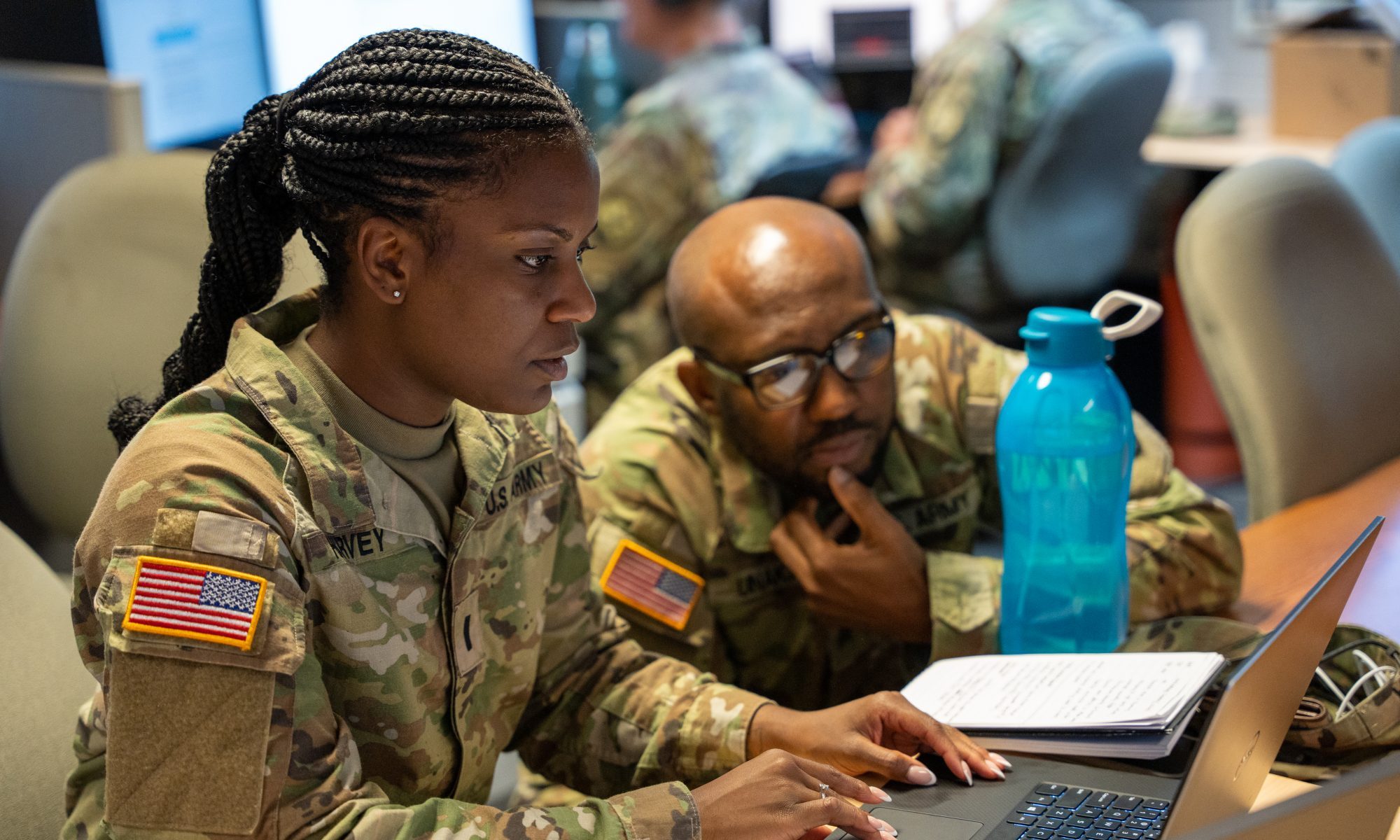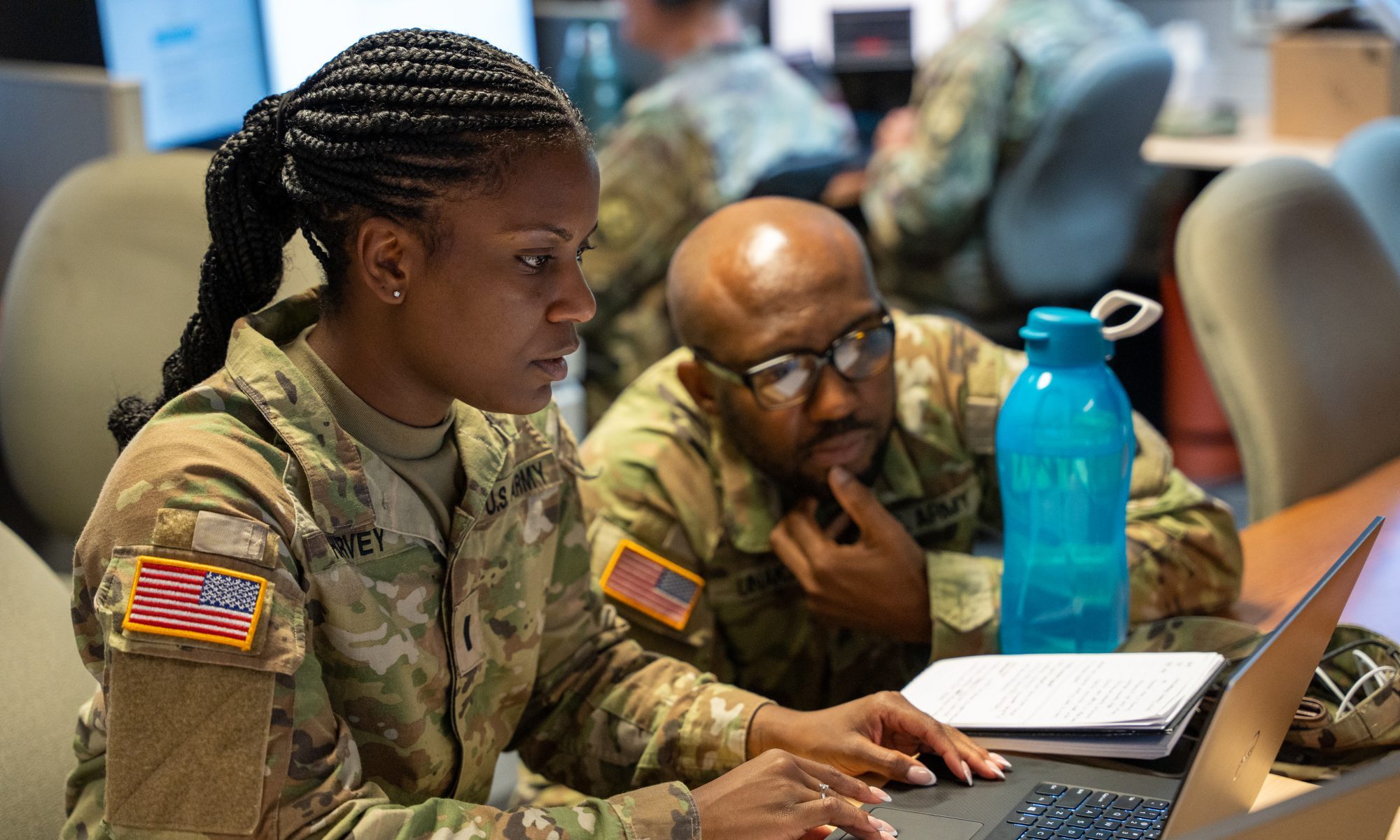

The Army is deactivating its last standing active-duty information operations command as part of the military’s shift to joint operations and a broader realization that information warfare is and will be significant in future wars.
With that in mind, the Army wants soldiers conducting information operations closer to the future fight and integrated into the different geographic regions.
In July, U.S. Army Cyber Command’s 1st Information Operations Command held its last change of command ceremony at Fort Belvoir, Virginia. The command was the Army’s only active-duty command focused on civil affairs, cyber warfare and psychological operations, also known colloquially as a PSYOP which aim to influence the beliefs and actions of other countries’ populations. An exact date for the unit’s official deactivation was not immediately clear.
“There was a little bit of a mismatch between what the functions were in [1st Information Operations Command] which had kind of accreted a variety of jobs over the years that weren’t all really truly related,” said Aaron Pearce, U.S. Army Cyber Command’s director for information warfare. “They were a parking space for cyber red teaming before cyber red teaming really became a common thing within the military.”
The Army’s cyber red teams emulate adversaries to highlight vulnerabilities in the broader U.S. and military networks to make improvements. The Army recently stood up a red team focused on exploiting cybersecurity weaknesses in artificial intelligence systems. The service has also created Expeditionary Cyber-Electromagnetic Activities Teams which have joined national training center rotations where they replicate real-world cyber operations in the field.
They are just one of several new units the Army is standing up as it pivots to a battlespace where information warfare is key — especially online where information moves fast and goes unchecked. In the midst of the actual hand-to-hand combat in Russia and Ukraine, another information war is playing out on the internet. According to NATO, Russia has used trolls to make posts and comments imitating real people, bots to automate messages and fabricated news to push messages with misleading information to push their own narratives.
The shift, according to Pearce, is part of the military’s understanding that information beyond the classified realm, meaning from public sources, is becoming “more central to the battlefield and that it’s important to all types of units, not just specialized units, but the maneuver commanders themselves.”
Earlier this month, the Army held a joint exercise focused on open-source intelligence with Finland, using AI algorithms to sift through data and flag specific keywords and phrases in certain geographic locations. They also used private sector satellite data that helped soldiers detect infrastructure changes, military asset movements, and other data points for strategic assessments.
Previously, the Army looked at information operations as “just a planning coordinating function at the command level,” Pearce said. But the Army’s new focus is to take data from all of the new AI-enabled and sensing technology along with open source information to help commanders be proactive in battle.
“It’s really turning information and trying to have an effect with it, not just reacting to it,” he added.
At a tech conference in August, Lt. Gen. Maria Barrett, commander of Army Cyber Command, said the 1st Information Operations command gave the Army insight into what information advantage could be when it was first stood up in 2002.
Subscribe to Task & Purpose today. Get the latest military news and culture in your inbox daily.
“We don’t want the same capabilities, though,” she said. “We want an evolved capability, and so it starts with, ironically, inactivating the 1st IO Brigade.”
The changes have come in spite of broader recruiting and retention problems facing the Army – specifically in its psychological operations (PSYOP) units. In March, a report by the Department of Defense’s Inspector General found that the Army didn’t have enough PSYOP soldiers to fight the information war with China and Russia, due to not recruiting, training, or retaining a sufficient workforce to meet the growing demand for PSYOP operations.
The inspector general also said that the lack of PSYOP-trained active duty soldiers has forced the service to rely on reservists to “fill the global, full-time requirements for conventional MISO.” The result of diminished active duty PSYOP soldiers, according to the watchdog report, has led to an increased risk of burnout among remaining soldiers.
However, the Army says the command’s deactivation will not impact existing PSYOP units.
“PSYOP as a function” will be a piece of the puzzle that in-theater unit detachments use in their assessments that are passed on to commanders who make the final decisions in combat, Pearce said.
Since 2006, PSYOP soldiers have been assigned to units in either U.S. Army Special Operations Command and the Army Reserve Command, leading to a difference in training among active-duty and Reserve PSYOP soldiers. In April, commanding general for the U.S. Army John F. Kennedy Special Warfare Center and School, or SWCS, announced it would standardize the varied PSYOP training among the full and part-time soldiers working those jobs.
Closer to the battlefield
During counterinsurgency fights in Iraq and Afghanistan, commanders had to request field support teams who were proficient in information operations to augment special operations command staff on the ground, Pearce said. Under the new model, the Army plans to have information warfare specialists embedded in the different regions where the U.S. military has a footprint.
The Theater Information Advantage Detachments, TIADs, will look at answering “how do we influence the adversary, how do we counter adversary information warfare campaigns against those forces” and take information from the battlefield and region into their analysis, he said.
The Army’s new Multi-Domain Task Forces will overlap with the TIADs in terms of soldier occupation specialties but they will also include soldiers with artillery backgrounds. Three will be assigned to the Pacific, one with Army forces based in Europe focused on Africa and another in the Middle East. One headquarters is currently in Germany and another is stationed in Hawaii, according to the Army.
Multi-domain operations occur “below the threshold of armed conflict,” and use space, cyber, air, sea, and land to “accomplish missions at least cost,” according to analysis by the Congressional Research Service. “During conflict, they are how Army forces close with and destroy the enemy, defeat enemy formations, seize critical terrain, and control populations and resources to deliver sustainable political outcomes.”
In terms of next steps, Army civilians assigned to the 1st Information Operations Command will remain within the Army Cyber Command. Military personnel from the command may take on positions in the new units or move to other areas depending on need.
The latest on Task & Purpose
- Four Marines trained an Air Force base to take the Marine Corps fitness test. The Air Force gave them medals for it
- Sailor proudly rocks ‘E-4 Mafia’ patch as he stands watch on USS Abraham Lincoln
- The A-10 era is over for this legendary Air Force attack squadron
- A comprehensive guide to the shoulder tabs Army soldiers wear on their uniforms
- 101st Airborne Division troops headed to Middle East, 3rd Infantry will go to Europe
